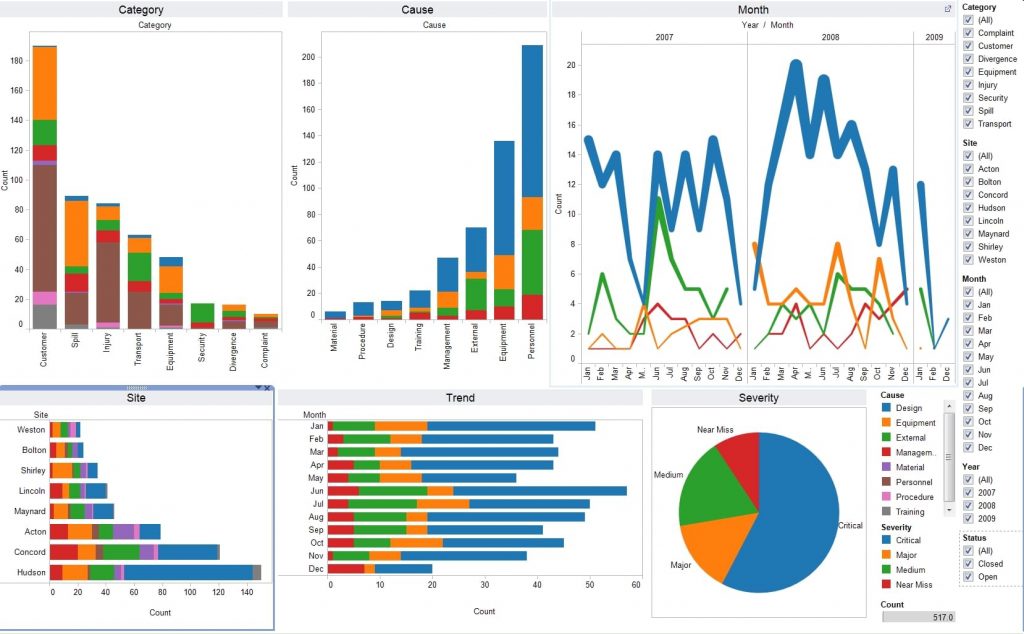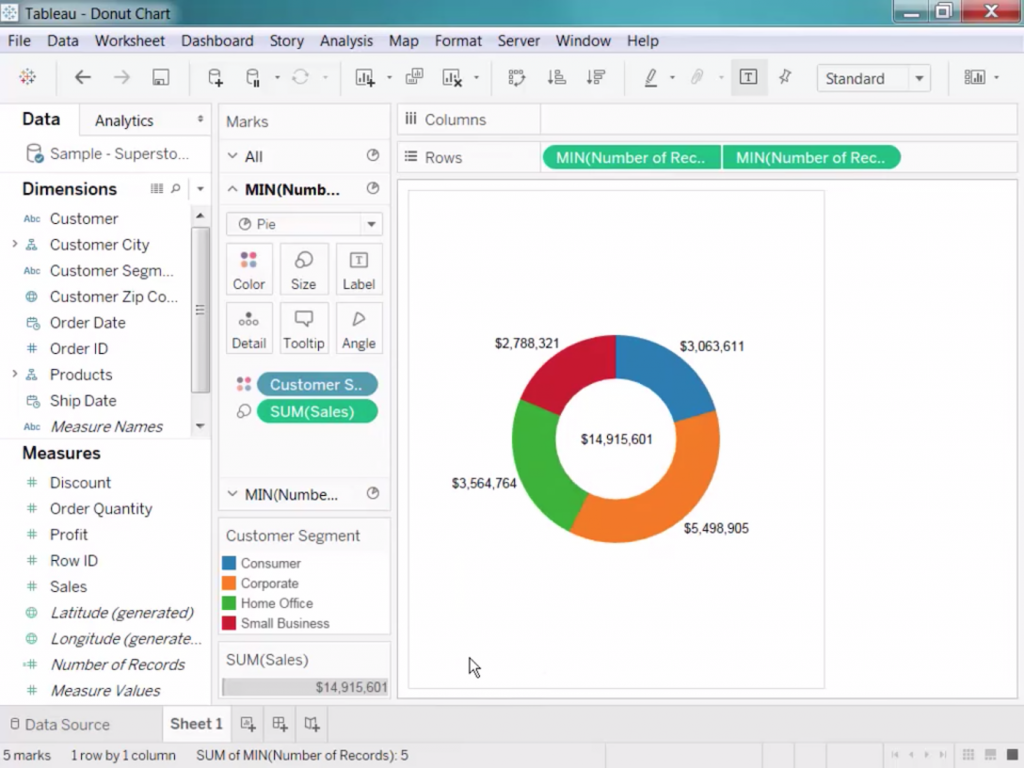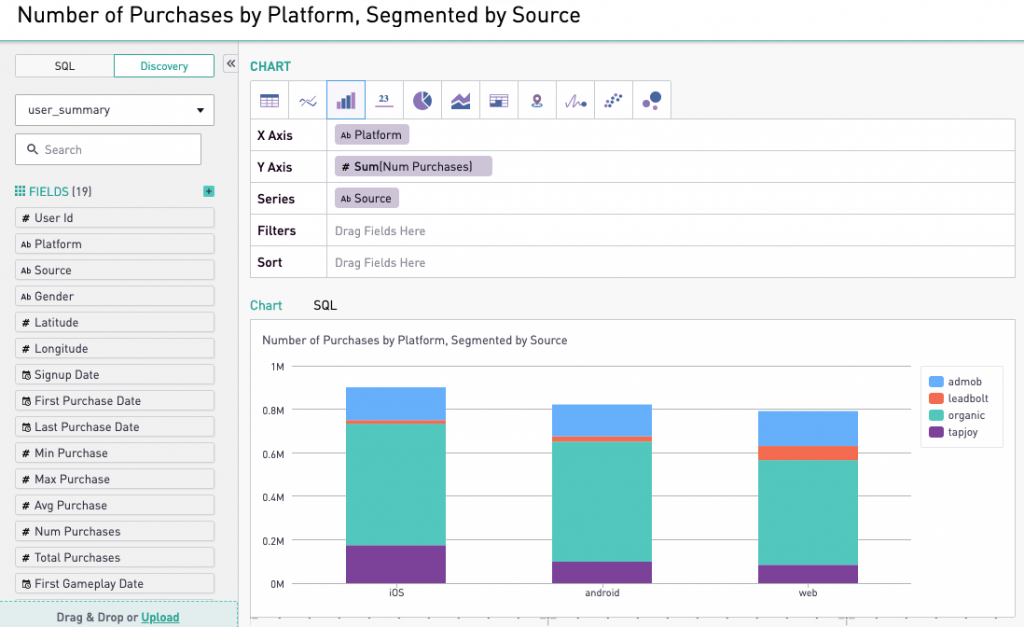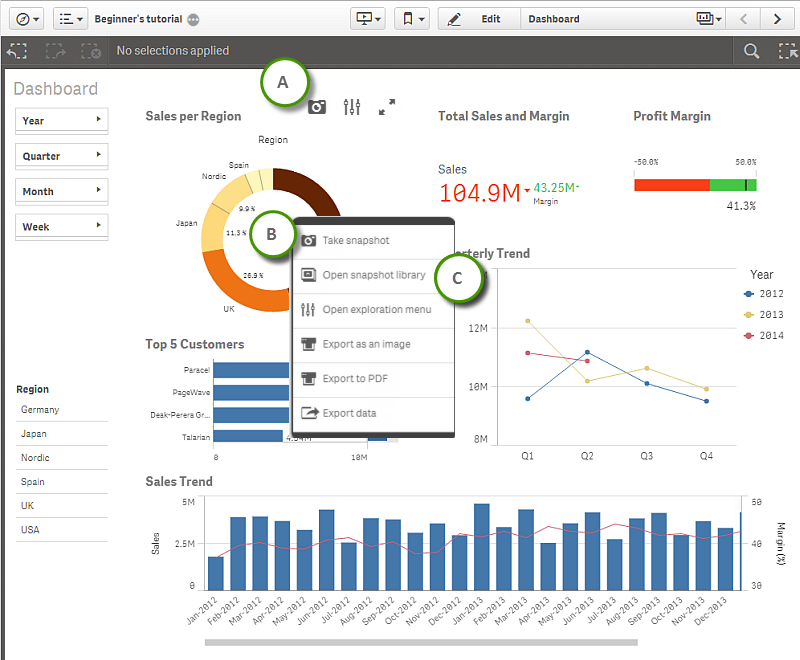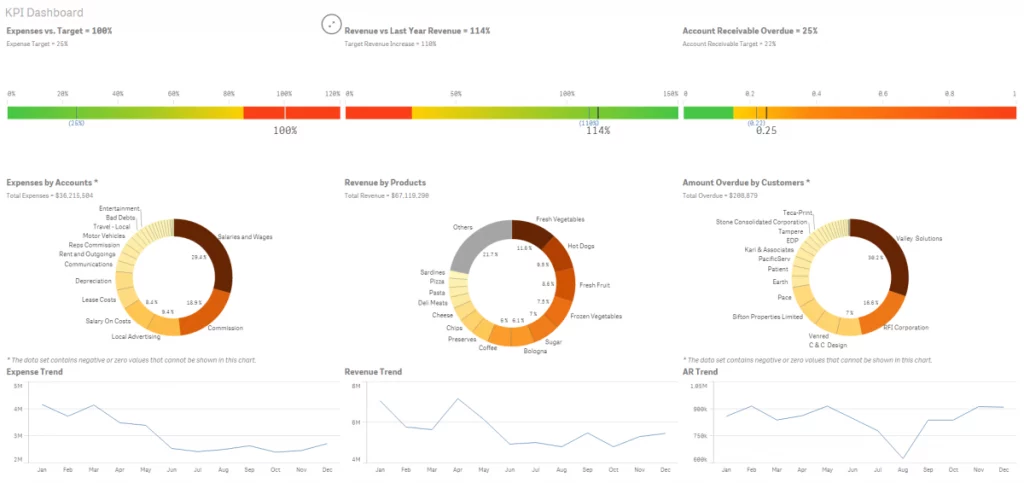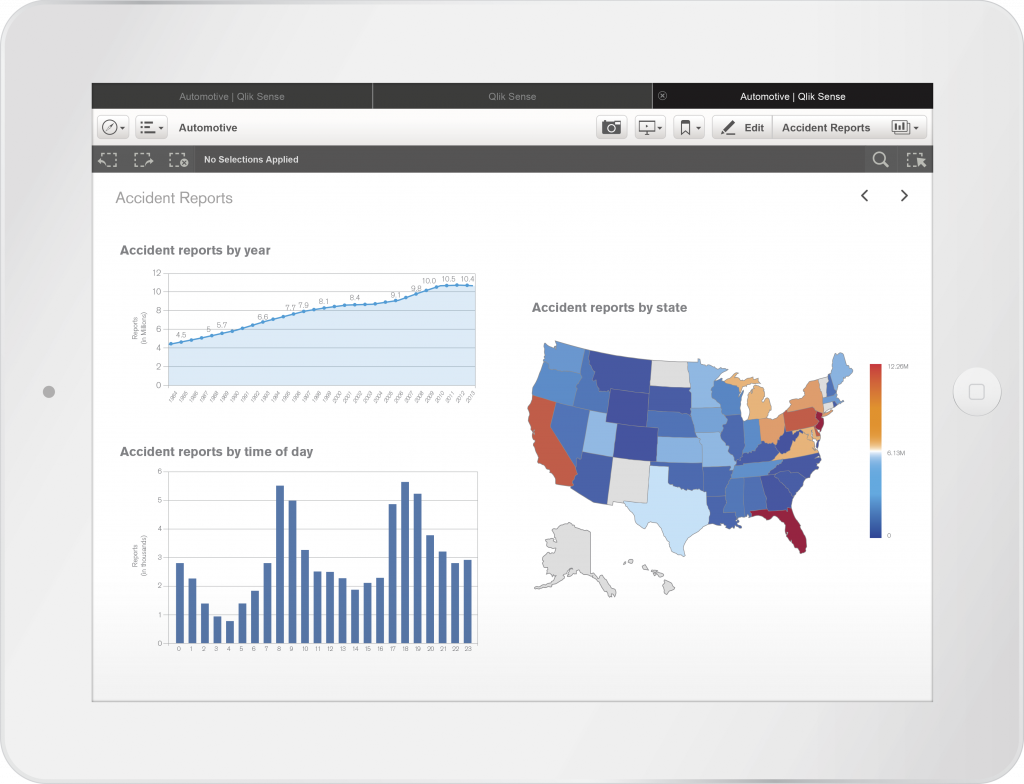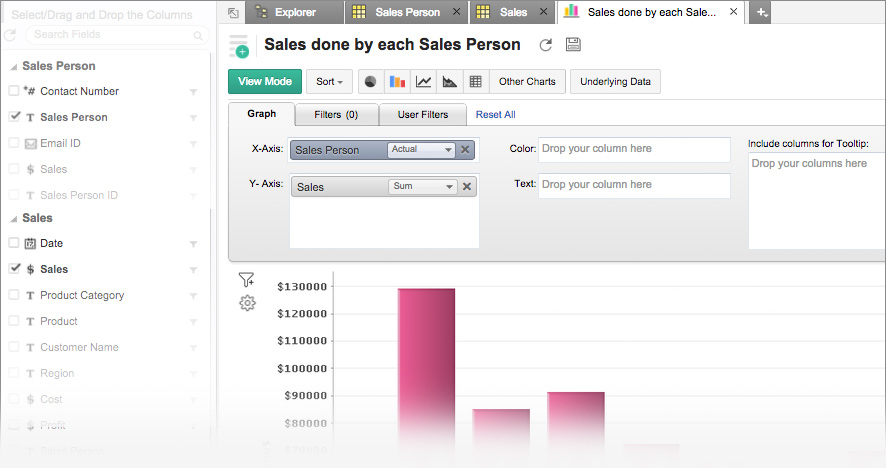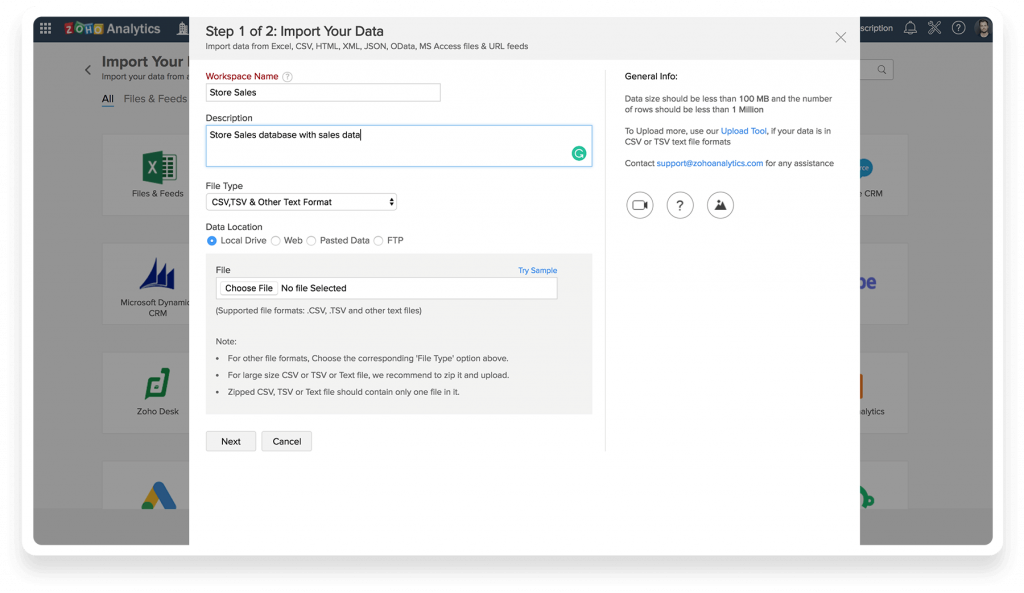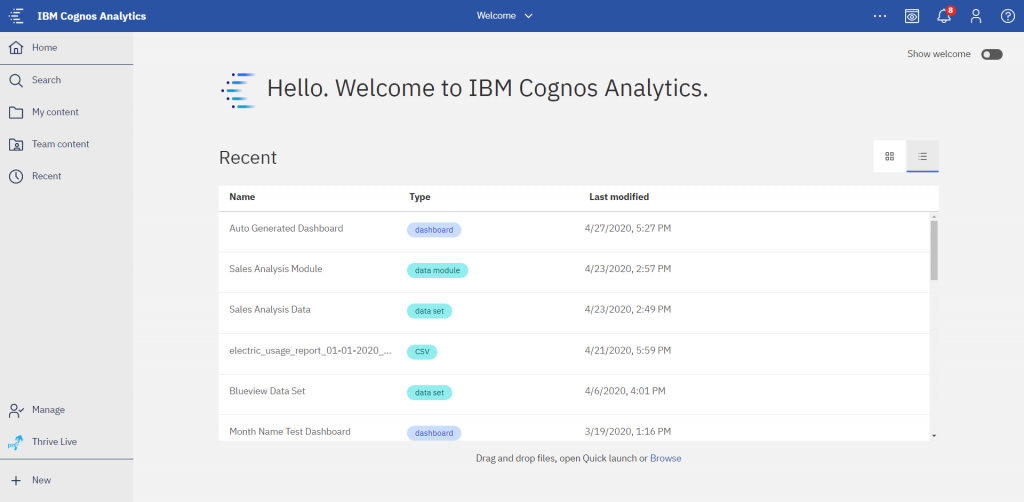
Written by
Aron Vaughan, Staff Writer
Read more by Aron →
Reviewed by
Corey Noles, Managing Editor
Read more Business Intelligence content →
Written by
Aron Vaughan, Staff Writer
Read more by Aron →
Reviewed by
Corey Noles, Managing Editor
Read more Business Intelligence content →
In this article...
What is business intelligence software?
Business intelligence (BI) software is any application that collects and processes large amounts of unstructured data from internal and external systems and prepares data for analysis. The software is generally used for querying and reporting complex business data. The ultimate goal of BI software is to drive better business decisions, increase revenue, improve operational efficiency, and gain competitive advantages.
Business intelligence tools gather data from various sources, such as databases, spreadsheets, and other business applications, and transform it into an understandable format for analysis. The software performs tasks such as data mining, forecasting, and reporting, as well as visualizing data through charts and graphs, allowing users to identify data trends and patterns. BI software also comes with reporting capabilities so users can create custom reports and presentations shareable with stakeholders.
What is the best Business Intelligence software?
Tableau: Best for data visualization
Pros
Cons

Our Rating: 4.3/5
Tableau, a leading data visualization BI tool, is designed to help businesses turn raw data into actionable insights. Its standout features include an intuitive drag-and-drop interface, real-time data analytics, and interactive dashboards that empower users to explore data in a user-friendly environment. Tableau’s Data Blending and Cross-Database Joins enable the combination of data from multiple sources, and its Tableau Public allows the sharing of data visualizations to a wider audience.
Users can present data in the form of charts, graphs, and other visual representations with dashboards and visualization tools. It also allows users to identify trends and patterns in data and make more informed decisions.
Sisense: Best for embedded analytics
Pros
Cons

Our Rating: 4.1/5
Embedded analytics tools use advanced algorithms to analyze large volumes of data and recognize trends and patterns that may not be immediately apparent. With data mining, predictive analytics, and prescriptive analytics, organizations can make decisions based on historical data.
Sisense is a Business Intelligent platform designed to simplify complex data processes. Its embedded analytics capabilities offer seamless integration into existing business applications.
The platform’s Elasticube technology handles large datasets, and its proprietary In-Chip technology enables speedy data processing. Its single-stack system facilitates end-to-end data management from extraction to visualization.
Qlik Sense: Best mobile BI software
Pros
Cons

Our Rating: 4/5
As the name suggests, mobile BI software lets users access and analyze data on mobile devices such as smartphones and tablets. This type of business intelligence software can be particularly useful for sales teams and field workers.
Qlik Sense, formerly QlikView, is a BI platform offering associative data analytics, enabling businesses to uncover hidden data trends and patterns. It’s powered by Qlik’s unique Associative Engine, delivering dynamic, click-driven dashboards and guided analytics applications. A standout feature is its “alternate states” function, facilitating comparative analysis of multiple datasets within a single view. Qlik Sense is particularly adept in offering a fully interactive mobile BI experience, enabling users to explore data, generate insights, and collaborate on-the-go with optimized apps for both tablets and smartphones.
Zoho Analytics: Best self-service BI software
Pros
Cons
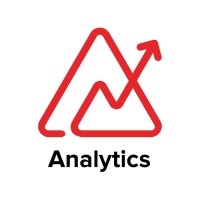
Our Rating: 4/5
Self-service business intelligence tools help businesses authorize employees to access and analyze data even without technical expertise. They enable users to generate reports, run queries, and create visualizations without relying on IT departments.
Zoho Analytics is a self-service business intelligence platform and data analytics software that allows users to create visualizations and data-driven insights without requiring extensive technical knowledge. With its drag-and-drop interface, users can design and share interactive dashboards, reports, and charts.
Zoho Analytics also features AI-driven data alerts, predictive business analytics software, and natural language processing capabilities, which enable users to interact with their data in an intuitive manner. Its integration with various data sources and Zoho’s suite of business applications makes it a comprehensive tool for diverse data analysis needs.
IBM Cognos Analytics: Best for reporting
Pros
Cons

Our Rating: 4/5
Reporting tools let businesses generate reports and run queries on data. Users can access data from multiple sources, including databases and spreadsheets, to analyze and summarize data through these tools. Reporting tools give users pre-designed report templates for quicker report generation. These templates are often customizable. Users can add or remove fields, change the layout, or modify the formatting to suit their needs.
Querying tools, on the other hand, enable users to extract specific data from a database or spreadsheet by running SQL queries. These tools offer users a way to construct queries without writing code.
With its advanced reporting and querying capabilities, IBM Cognos Analytics simplifies data analysis and report generation, transforming complex data into meaningful insights. Its intuitive interface allows users to create ad-hoc queries and interact with data on the fly. Furthermore, the platform includes a smart assistant, powered by AI, to help answer questions and uncover patterns in your data.
Find your new BI software
Business intelligence software benefits
Improved data quality
The best BI tools automatically identifies and cleans up inaccurate, incomplete, or duplicated data, ensuring that only high-quality data is used for analysis. Additionally, it enforces data standards and rules across different systems, ensuring data consistency and accuracy while reducing the risk of errors that can arise from manual data entry. Moreover, companies can gain a fuller picture of what is happening with their business by aggregating different data sources through business intelligence solutions.
Greater transparency
Business intelligence tools give real-time visibility into business operations and performance. This enables organizations to monitor progress and identify potential issues in real time. By providing a thorough view of key metrics, BI software empowers businesses to identify areas for improvement and take corrective action when necessary.
Better decision-making
The software equips organizations with valuable insights into their operations, informing strategic decisions across product development, marketing, sales, and other critical areas. Business intelligence tools also show useful information on employee productivity, revenue, and department-specific performance, allowing organizations to understand their strengths and weaknesses.
By analyzing large volumes of data from different sources, BI software can identify trends and patterns and uncover opportunities. With competitors moving quickly, companies must expedite making accurate decisions to avoid losing customers and revenue.
Increased efficiency
Companies can optimize resources and streamline processes with business intelligence software, decreasing costs and increasing efficiency. The software lets businesses make data-driven decisions to reduce waste by providing information on inventory management, supply chain optimization, and production planning.
Furthermore, business intelligence tools unify multiple data sources, refining the overall data organization so that managers and employees spend less time tracking down information and can focus on producing accurate and timely reports.
Enhanced business margins
Business intelligence software improves business margins by identifying areas where costs can be reduced, such as streamlining supply chains and optimizing inventory management. It can also determine opportunities for revenue growth, like finding high-value customers, analyzing sales trends, and developing marketing strategies. BI software enables organizations to better understand their competitors, market trends, and customer preferences, so they can promptly respond to changing market conditions.
Integration
It’s important to note many BI software solutions integrate with other software systems, including customer relationship management (CRM), enterprise resource planning (ERP), and accounting software. By doing so, companies obtain a more comprehensive view of their operations and performance by combining data from multiple sources. Business intelligence software is crucial for those seeking competitive advantage by utilizing data-driven insights to make better-informed decisions and adapt to shifting market conditions.
What is the business impact of business intelligence software?
Business intelligence software has a significant impact on businesses by providing valuable insights into customer behavior, market trends, and operational inefficiencies, which directly affect a company’s bottom line. It assists organizations in increasing revenue, reducing costs, and improving overall performance.
Today, investing in business intelligence software rather than relying solely on spreadsheets is a logical decision for companies of any kind. BI software handles large volumes of data more efficiently, minimizes the risk of errors, offers a range of analytical tools and visualizations, and brings real-time data updates, which are crucial in fast-paced business environments.
BI software supports businesses better understanding their clients by analyzing customer data to identify trends and preferences. This, in turn, allows organizations to tailor their products and services to meet customer needs, leading to greater customer satisfaction, loyalty, sales, and revenue.
The software also helps businesses uncover operational inefficiencies and bottlenecks by analyzing production processes, supply chains, and employee performance data. Such analysis helps to determine underutilized resources and streamline operations, boosting efficiency and decreasing costs, eventually resulting in higher profitability.
Business intelligence tools facilitate more effective decision-making by presenting accurate and timely data on sales trends, supply chain performance, and other key business metrics. This data allows business leaders to make informed decisions, driving growth and keeping the business ahead of its competition. As a result, companies can swiftly respond to constantly changing market conditions and have better chances of achieving financial success.
Choosing the best software for business intelligence platform
Ready to start your business intelligence software comparison? Our Technology Advisors are here to help you find the perfect tool for your company’s projects. Call for a free 5-minute consultation, or complete the form at the bottom of this page for fast, free recommendations based on your needs.






